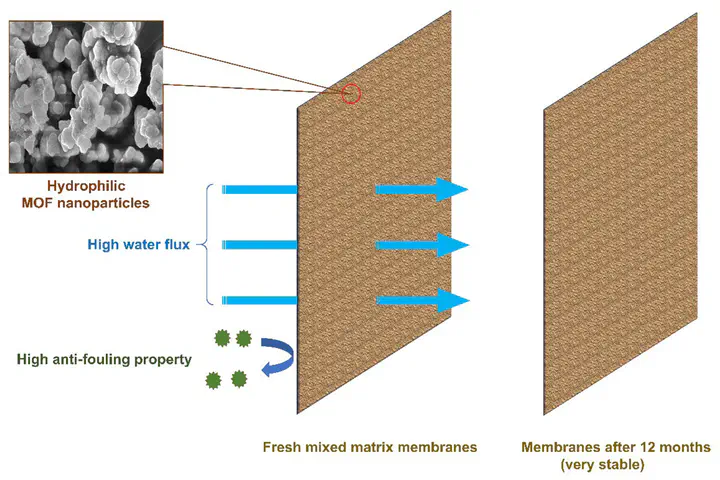Long-term stable metal organic framework (MOF) based mixed matrix membranes for ultrafiltration

Abstract
In this study, novel mixed matrix membranes (MMMs) were synthesised by adding metal organic frameworks (MOFs) (UiO-66 and UiO-66-NH2) to pristine and sulfonated polyethersulfone (PES). The differing synthetic method resulting in MMM where additives were grafted to the matrix polymer, or formed a natural interface, allowing the impact of these MMM features to be investigated. The composite membranes were characterised by FTIR, PXRD, water contact angle, porosity, pore size, etc. Membrane performance was investigated by water permeation flux, flux recovery ratio, fouling resistance and anti-fouling performance. The stability test was also conducted for all the prepared mixed matrix membranes. A higher reduction in the water contact angle was observed after adding both MOFs to the PES and sulfonated PES membranes compared to pristine PES membranes. An enhancement in membrane performance was observed by embedding the MOFs into PES membrane matrix, with flux increased remarkably (565 LMH for PES+UiO-66-NH2 at 5% loading and 487.1 LMH for SPES-UiO-66(10% binding) while the BSA rejection was still kept at a high level. By adding the MOFs into PES matrix, the flux recovery ratio was increased greatly (more than 99% for most mixed matrix membranes). The mixed matrix membranes showed higher resistance to protein adsorption compared to pristine PES membranes. After immersing the membranes in water for 3 months, 6 months and 12 months, both MOFs were stable and retained their structure. This study indicates that UiO-66 and UiO-66-NH2 are great candidates for designing long-term stable mixed matrix membranes (MMMs) for applications in water and wastewater treatment.